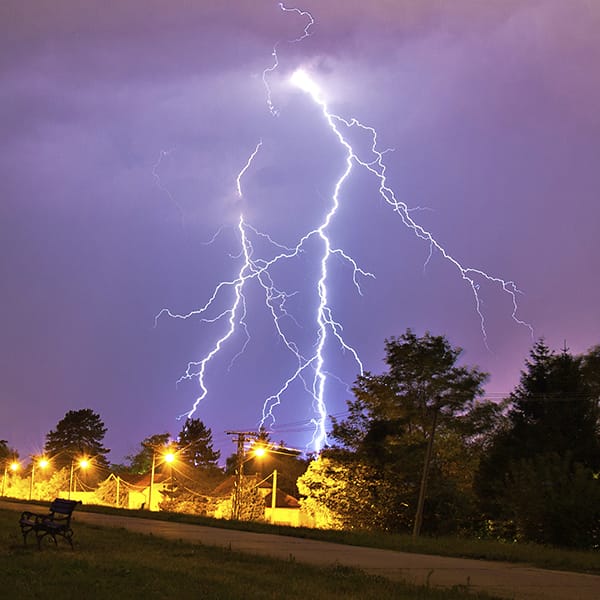Utilities have two overriding missions: keeping the lights on and power quality high. Here are some technological tools that help.
 If you lived in Japan and happened to be served by Tokyo Electric Power, you would have been without electricity for a brief four minutes during 2014. That was TEPCO’s average outage duration figure. The utility’s average frequency of outages was less than one percent that year.
If you lived in Japan and happened to be served by Tokyo Electric Power, you would have been without electricity for a brief four minutes during 2014. That was TEPCO’s average outage duration figure. The utility’s average frequency of outages was less than one percent that year.
These numbers are exceptional. Still, most European countries average fewer than 100 minutes of outages annually. In contrast, one of America’s largest utilities saw service interruptions average 440 minutes during 2015, and five others were at or above 200 minutes of outage time.
Reliability in the U.S. may not be all that great, but it isn’t for a lack of trying. Thomas Kuhn, President of the Edison Electric Institute, recently told Wall Street analysts that “EEI’s member companies invest more than $100 billion each year to build smarter energy infrastructure.”
Fortunately, technology is providing ways to make those smart-grid investments even smarter.
 Rained out
Rained out
According to a 2013 report produced jointly by U.S. Department of Energy researchers and the President’s Council of Economic Advisors, severe weather is the leading cause of widespread power outages in the U.S. What’s more, weather seems to be getting worse.
Research conducted by Climate Central, a nonprofit science organization, examined 28 years of power outage data supplied to the North American Electric Reliability Corporation by utilities. That study found that extreme weather doubled the incidence of major power outages—those affecting more than 50,000 customer homes or businesses—between the mid-1980s and 2012 throughout the U.S.
When researchers at DOE’s Lawrence Berkeley National Laboratory parsed through 13 years of outage frequency and duration information for 193 U.S. electricity distribution utilities, they found clear correlations between severe weather and outage occurrences.
So, how can technology help? Outage management systems (OMS) are one tool, and some utilities are strengthening their capabilities using real-time outage messaging from advanced metering infrastructure (AMI) to enable faster location and restorations, as well as predictive maintenance activities.
AMI data expands available information utilities can use to detect system problems, says Jonathan Leifheit, a senior product manager with Landis+Gyr. Rather than wait for customer calls, the data pinpoint impacted grid devices to speed crews on their way to restoration activities.
After Oncor, the largest electricity provider in Texas, tied AMI data to its OMS, more than 1,400 notifications alerted system operators to trouble within the first six weeks of the integration. Among the issues that were outages, more than half were fixed before customers called to complain. More important, the alerts also identified power-quality issues that the utility could proactively address, such as bad connections and open neutrals. This likely prevented other service troubles.
 Loading up
Loading up
Burbank Water and Power is another utility that has used AMI data to prevent outages. Specifically, this utility mapped meter readings showing consumption and voltage across each feeder using Landis+Gyr’s Advanced Grid Analytics module. Armed with an accurate look at transformer loading, the utility was able to use IEEE standards to calculate insulation life based on real load profiles.
“This effort identified overloaded transformers that would have been more likely to fail,” says Leifheit. “It showed the utility which transformers needed to be right-sized.”
In March 2014—before summer heat waves could tax the overloaded assets—utility workers replaced or adjusted more than 50 transformers identified with the highest potential for failure. That summer, the utility suffered no outages associated with transformer failure, despite heat waves that sent Southern California sweating through 100-degree days.
The bushy-tailed bane
Weather may be responsible for the largest and most prolonged outages, but the most common threat to our infrastructure isn’t hurricane season, and it’s not some nefarious Russian hacker. It’s squirrels and other wildlife.

While utilities can’t control what a squirrel will chew, they can certainly place animal guards at strategic places, and analytics help.
“You really need to know how many outages have been seen on a section of feeder and how many people are behind the locations where animal intrusions tend to happen,” Leifheit explains. The goal: Place protection devices like animal guards where the greatest number of customers will be affected. And, naturally, the same kind of analytics come into play when placing fault circuit indicators to detect problems quickly and switches to protect crews on the system.
Outage management systems and animal guards are old-school technology. The new part is how analytics are helping utilities place these items more wisely.
Under separate cover
Another technology grabbing lots of utility attention is microgrids, or localized power systems comprised of generation and storage resources that can disconnect from the grid and operate autonomously to shore up reliability.
What makes microgrids so promising? For one thing, they’re more reliable than generators, the current popular option for hospitals, government buildings and other sites looking to keep lights on when the grid goes dark.

Industry estimates place the failure rate of generators as high as 30 percent, largely because these devices only get used occasionally, leading to a host of potential problems. Sulfates can accumulate on battery plates and bring on battery failure, diesel fuel can degrade and clog fuel filters, coolant can leak … the list goes on and on.
This doesn’t happen with microgrids, which are often run continuously alongside the grid so that owners/operators can take advantage of renewable power, bid into energy markets and more.
When Hurricane Sandy slammed into the East Coast in 2012, New York University had to evacuate 215 patients from its Medical Center because the generators didn’t kick in. Meanwhile, in hard-hit New Jersey, Princeton University’s 15-megawatt microgrid kept the campus powered for a day and half, leaving the school a vital staging ground and charging station for law enforcement and rescue workers.
Navigant researchers forecast global microgrid capacity to grow from 1.4 GW in 2015 to 7.6 GW by 2024.
Maybe microgrids will soon be part of that $100 billion EEI member companies now spend annually. Already, this technology is looking to be a smart addition to the intelligent grid.